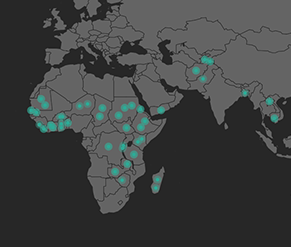Construction of the remaining schools planned for the 2019/20 fiscal year has begun.
Embedding recovery in the sector plan
Nepal’s School Sector Development Plan (SSDP), which was under development when the earthquake occurred, was revised to reflect disaster and school reconstruction objectives and strategies as part of the overall reconstruction effort.
The plan includes not only disaster mitigation objectives but also programs to support community resilience, an important component as schools are at the center of many communities.
Structural assessments of non-affected districts and schools were carried out and retrofitting will ensure that damage is minimized the next time a disaster hits. Nepal’s curriculum and textbooks already included disaster risks, including earthquakes, but this will be strengthened.
In line with the GPE principles of inclusive and effective education policy dialogue around the government, Nepal’s joint sector review processes were strengthened over the years.
Reconstruction efforts continue to be part of the sector discussions, providing regular updates on the earthquake recovery and reconstruction efforts to development partners.
New GPE grants to support a stronger education system
GPE continues to support Nepal and awarded the country US$24.2 million in March 2019, which go into a pooled fund with the Government and 8 other development partners. The GPE grant directly supports the implementation of the government program, the SSDP, which aims to improve the quality, access and efficiency of early childhood, basic and secondary education, and also includes disaster risk reduction.
The grant is composed of a regular implementation grant of US$9.2 million and a US$15 million GPE Multiplier grant, leveraged with additional co-financing of US$164 million from the Asian Development Bank and US$3.5 million from USAID. The ADB grant supports disaster risk reduction and school safety.
Through the efforts of the government and its partners, Nepal is not only in the final phase of recovering from the damages and impact from the 2015 disaster but has also further strengthened its education sector resilience. The country is now prepared to face natural disasters and ensure education doesn’t get disrupted.
Unfortunately, this is not a luxury as the country is located in one of the most active seismic zones in the world and earthquakes are not an ‘if’ but rather a ‘when’.
Students affected by the earthquake, like Dipesh and Matisha, have hope that they’ll be able to continue their education in a safe classroom and look forward to a better future.











